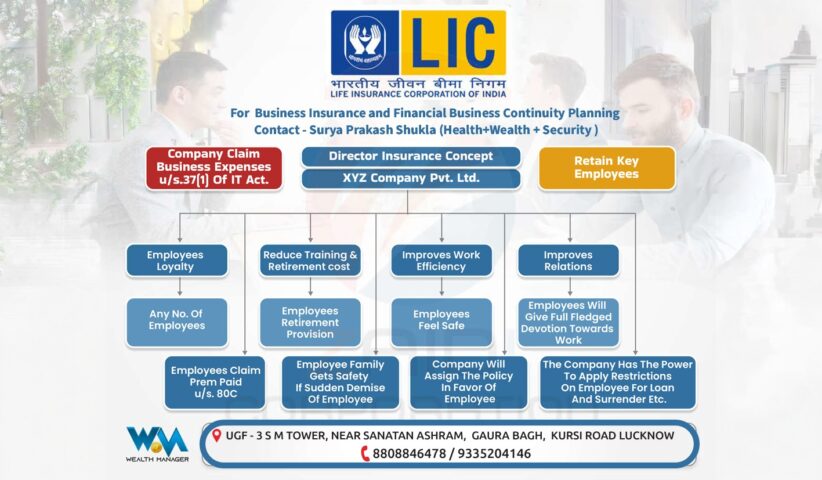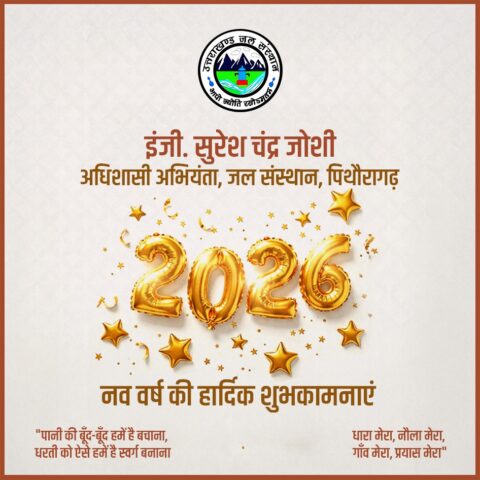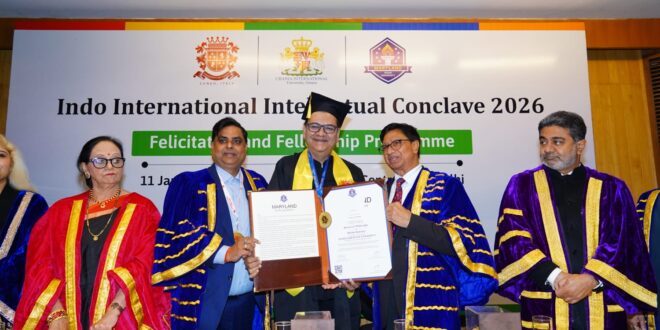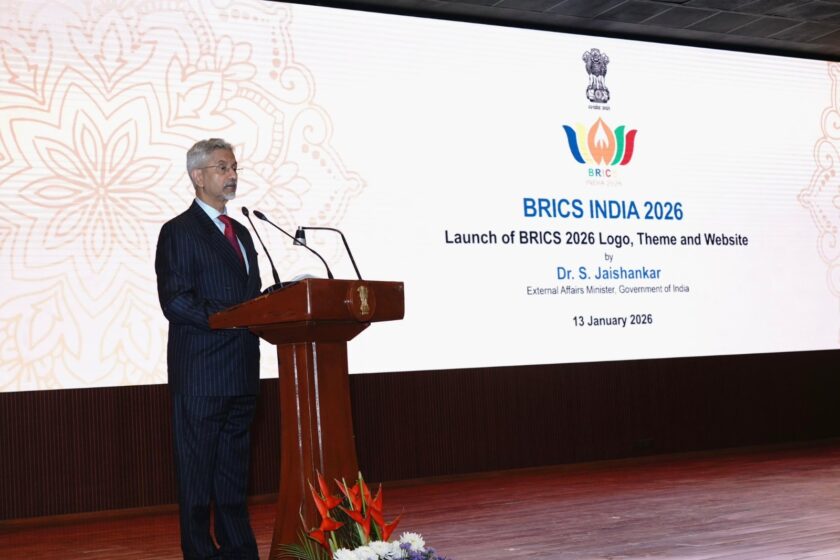Dr. Umesh Pratap Singh
New Delhi: It is the most detailed statement of the government’s finances, which includes revenue from all sources and expenditure on all items. The income-expenditure statements are prepared to achieve the government’s macroeconomic objectives, so the budget is important in deciding the direction of government policies. The first part of the budget contains details of the general economic survey and policies and the second part contains proposals for direct and indirect taxes for the coming financial year. After the introduction of the Goods and Services Tax (GST), the GST Council takes decisions regarding indirect taxes, so now the common people are less excited about the budget than before.

Yes, those who are paying direct taxes are definitely more excited about it. Now the public is also more aware about the government’s spending programs and policies. High growth, fast growing manufacturing sector, controlled inflation and reduction in fiscal deficit compared to budget estimates indicate that the economic conditions in the country are good at present. Although the rupee has depreciated slightly and the current account deficit of the balance of payments is about 0.7 percent of GDP, but the foreign exchange reserves have reached an all-time high of $665.8 billion. In such a situation, the challenge before the Modi government in the budget is to maintain this growth and address the issue of inflation, especially food inflation and unemployment.
Services like health, education have become twice as expensive, which is affecting every person but the official inflation rate is less than 0.5 percent. Income is not increasing in rural areas. Apart from other activities, the budget should focus especially on sectors and businesses that generate employment. Even though there has been improvement in ‘Ease of Doing Business’, direct benefit transfer may be claimed to reduce corruption, but the ground reality is that the struggle to do business with ease and freedom has not reduced, corruption has increased at the state and district levels and the ever-increasing bureaucracy has strengthened the inspector raj.
An increase in tax exemptions and social expenditure is expected in the budget. In the previous budgets, the focus was on capital expenditure, which boosted GDP, but capital expenditure has not been able to generate employment and increase income, hence consumption expenditure decreased. The way the government has divided various ministries and indicated to continue the old policies, there is not much possibility of change in policies during the budget. It is expected that the government will not reduce capital expenditure while maintaining fiscal balance, as it is necessary to accelerate economic prosperity in the economy. Along with this, it will focus more on increasing investment in those sectors and industries where there is more possibility of employment generation.
Need for concrete measures to increase employment and income budget should focus on employment
In the last few years, the two main objectives of fiscal policy have been to increase capital formation by investing in public infrastructure and to reduce the fiscal deficit from 6.8 percent of GDP in FY 2021-22 to 4.5 percent by FY 2025-26. The government slightly changed its spending pattern by increasing capital expenditure and reducing expenditure on various welfare programmes. The share of capital expenditure in the overall budget has increased from about 12 per cent during the corona period to more than 23 per cent now. The ratio of capital expenditure to GDP for the central government increased steadily from 1.7 per cent in FY 2019-20 to 3.2 per cent in FY 2023-24. In relative terms, funds allocated for some direct welfare programmes such as food subsidy, MNREGA and PM Kisan declined from 1.7 per cent to 1.2 per cent of GDP.
Capital formation has grown rapidly over the years with a cumulative increase of 29.5 per cent between FY 2019-20 and FY 2023-24. During the same period, consumption, which accounts for about 60 per cent of the economy, grew only 17.5 per cent cumulatively. There is also evidence of serious contradictions between consumption demand from different segments of the economy. The economically strong class has shown strong demand for various premium goods and services, while the demand of the economically weaker class has not yet recovered from the shock of Covid. The expansion in capital formation and construction activity has been more capital and technology driven rather than job creation.
Despite the government’s constant push for capital expenditure, there is no meaningful increase in private investment due to the lack of strong growth in consumption and demand. Therefore, a proper policy of reallocation of government expenditure is needed in the budget to boost demand. The Modi government suffered a setback in the elections, so in the next budget more money can be allocated for programs like housing, rural roads, livelihood enhancement etc. or taxes on the domestic sector can be exempted to boost demand, which is also necessary. The message of the election is very clear that until the benefits of economic prosperity reach the deprived and unemployed of the lower class of the society, they cannot be satisfied with India becoming the world’s largest economy, but the government will have to make efforts for employment opportunities for them. Along with this, it will also have to be ensured that their
Real income should grow steadily.
The budget should focus on creating productive jobs at a rapid pace along with economic growth. The growth in employment should be higher than the rate of growth in working-age people. Instead of relying only on economic growth for job creation, the strategy has to be adopted to accelerate economic growth through rapid job creation. The government is already making capital expenditure equivalent to three percent of GDP to attract private investment, now the focus should be on creating a better business environment and encouraging private investment. There is a need to focus on creating more jobs by improving physical and digital infrastructure and using the rapid expansion of e-commerce and digital payment systems.
Tax relief to the middle class is necessary budget-should-focus-on-employment
In relative terms, the middle class has the highest tax burden, combining direct and indirect taxes. The real tax burden for the individual income tax payer has increased in recent years. At present, the contribution of income tax has become more than corporate tax. In the financial year 2023-24, the net corporate tax was Rs 9.11 lakh crore, while the net income tax was Rs 10.44 lakh crore, hence the expectation of income tax exemption has been going on for many years. Taxpayers with annual income of Rs 05 lakh to Rs 20 lakh need to be given relief. Currently, these people are facing a tax rate of 5 to 20 percent from 05 lakh to 15 lakh and taxpayers with income above Rs 15 lakh are facing a tax rate of 30 percent.
For the salaried class, the maximum limit of income tax exemption on their salary and gratuity should be increased substantially. The amount of standard deduction for government employees should be increased to Rs 1 lakh. A report said that due to the increase in prices, Indian families have had to spend 18 percent more than before in the last quarter of this financial year 2023-24. Retail inflation based on the Consumer Price Index (CPI) fell from 4.83 per cent in April to 4.75 per cent in May, the lowest in a year. Inflation has remained below 0.5 per cent since March but food inflation, which accounts for about 40 per cent of the overall consumer price basket, rose 8.69 per cent on an annual basis in May, as against 8.70 per cent in April.
Food inflation has remained above 0.8 per cent continuously since November. On the other hand, in rural areas, after the Covid period, wages as well as employment have declined, hence due to lack of growth in income and consumption in rural areas, private investment and economy could not get the required and expected momentum, hence it is necessary to provide relief to the lower and middle class by reducing direct and indirect taxes and simplifying tax. In fact, by giving tax relief to the middle class, the collection of direct taxes of the government may decrease for some time, but it will increase consumption which will further accelerate the economy and the collection of indirect taxes will increase.
Given that the new tax regime has still not received widespread acceptance, the tax deduction under 80C should be extended to the new tax regime, again the tax exemption limit under the new tax regime also needs to be revised upwards, only then it can be made attractive. The deduction limit in 80C and 80D should also be increased in the old regime. The tax deduction limit under 80C was last increased from Rs 01 lakh to Rs 1.5 lakh in 2014-15. Since then the cumulative consumer price inflation has been more than 60 percent. On this basis, it would be appropriate to increase it to at least 2.5 lakhs.
This will also help in increasing savings. Increase in 80D limit is necessary in view of the rising cost of health services. Seven years have passed since the country’s indirect tax system was changed, GST was implemented. Now the time has come to try to improve the infrastructure of GST. GST was initially conceived with a single rate, which would have ensured clarity and economy but there are multiple rates and slabs, which is against the very spirit of GST. There should not be a dual structure at the state and central government level.

Reduction in tax rates in favour of low to middle income groups and rationalisation of the tax structure is necessary to boost demand from the lower segment of the population. MSMEs not only play an important role in providing a large number of employment opportunities at a lower capital cost than large industries, but also help in industrialisation of rural and backward areas. The sector contributes about 40 per cent to the total employment and exports of the country. Many important industries like textiles, toys, leather, handicrafts have immense potential for growth and employment. The MSME sector has provided employment to 12.36 crore people between 01 July 2020 and 01 August 2023. The government is excited by the success of the first phase of the PLI (Production Linked Incentive Scheme) scheme, which helped reduce dependence on China in APIs, defense equipment, mobile phones, electronics and many more.
Now the next phase of PLI requires support to the small and medium enterprises (MSME) sector. It is important to formulate a PLI scheme for MSMEs for more balanced industrial development along with job creation. Promoting the micro, small and medium enterprise sector, which is considered the backbone of the Indian economy and important in terms of employment, will increase employment, income and consumption.
A production-linked incentive scheme should also be introduced for import substitution from China, including organic chemicals, plastics and EV-related equipment. A trade policy should be formulated that encourages small businesses to increase exports. Small suppliers should be encouraged to prepare the final product for local demand.
Rural and agricultural sector budget-should-focus-on-employment
There are high expectations from this time’s budget for the rural and agricultural sector. The agricultural growth rate fell to 1.4 percent in FY 2024. The decline in the agricultural sector affects the entire economy, but the income of agriculture and rural sector has not increased in the last few years, so consumption is also sluggish. At present, there is a need to focus on the development of infrastructure in the agricultural sector, investment in agricultural research and increasing capacity regarding climate change. The government will have to take concrete measures for climate measures and in the context of smart agriculture. For the development of agriculture, it is necessary to increase the level of research and development in this sector. This will require a substantial increase in the budget for agricultural research and development. The amount of the Agricultural Research Council will have to be more than doubled from Rs 9,500 crore. The government also needs to focus on food inflation, especially the inflation of vegetables, oilseeds and pulses.
The government needs to strike a balance between the interests of farmers and consumers by making the trade policy consistent with the domestic price policy. India is among the largest edible oil importers in the world, importing more than 60 percent of the demand for edible oils in India. There is a need to launch a national mission to increase oilseed production, so that India’s dependence on expensive imports of edible oils can be reduced. Due to the introduction of storage limits for essential agricultural produce and reduction in import duty, market prices are falling below the Minimum Support Price (MSP), so the government also needs to consider increasing the incentive amount given to farmers under the PM Kisan Yojana. The amount of Rs 6,000 should be increased to at least Rs 8,000. .
Education, Health and Environment
Consumption of public utility goods like education and health not only benefits the consumer but also his family, society and all the people associated with him. In this way, economic prosperity can be accelerated by making education and health accessible and better. The government needs to pay special attention to the fact that all sections of the society can get almost equal and quality education and health facilities. The expenditure on education and health in India is much less than many emerging economies. A lot of work still needs to be done at the ground level for skill development. In the long run, better arrangements will be required for skill development. Innovation and research and development will have to be given priority in the country. In the upcoming budgets, it should be ensured that more and more expenditure is made on education, health and skill development, only then a solid foundation of economic development will be laid and it will be possible to permanently remove poverty from the country.
The way the blind race of development has affected the environment and ecological balance, it has created a danger for human life in the coming times. In India, where more than two-thirds of the population depends on the agriculture sector for their livelihood and 40 percent of agriculture is dependent on monsoon, the continuous climate change can bring turmoil to the entire economy. Drying and polluted rivers, degraded, burning forests, the worsening problem of drinking water have brought water, forests and land to the center of development policies. There is a need to take concrete measures on all these in the budget. In this context, there is also a need to increase expenditure on research and development and encourage the private sector.
Due to online shopping, the profit of retailers has been greatly affected, whereas the share of retail trade in India is about 10 percent of the country’s gross domestic product (GDP) and this sector is second after agriculture in terms of the number of people directly employed. In the budget, the government should also make concrete arrangements for these sellers, so that they can compete with the sellers of the organized sector. Those areas can be identified where the retail industry can be strengthened. In March 2020, during the Covid pandemic, the Indian Railways had stopped the concession in train fares for senior citizens. This time the government should restart the concession in train fares for senior citizens. Earlier, senior women passengers used to get 50 percent discount in ticket fare, while senior men and transgender citizens used to get 40 percent discount.
Dissatisfaction has to be taken seriously
This election has made it clear that even though this government has worked for development, increased the country’s prestige and strength at the international level, strengthened the economy, distributed essential commodities like food grains, houses, gas etc. for free, it is not possible to satisfy the public without increasing quality employment and controlling the prices of essential commodities. Not taking the dissatisfaction of farmers, youth and middle class seriously has always been a burden on governments. In the past, the rising prices of onion have troubled many governments.
India has given relief.
Certainly, India is the fastest growing country in the world at this time, but if the economic condition of the common people does not improve, the unemployed do not get employment, the condition of farmers and rural areas does not improve, there is no real increase in their income and consumption, then this uneven progress of the economy has no meaning for the common man. The government’s strategy of focusing on infrastructure development and continuing capital expenditure to maintain the pace of economic growth is correct, but it is also necessary to take measures in the budget to reduce the tax burden on the common people and control the inflation of food items. There is a need to make employment promotion schemes like relief at the lower level of income slab in income tax, production-related incentives better and effective and promote ease of doing business.
Along with this, the income of farmers and rural people cannot be increased without implementing concrete measures for agriculture and rural development. In order to give relief to the middle class, the government needs to seriously consider two more important things. First, restoration of old pension for salaried employees or improvement in the pension system and second, formation of the Eighth Pay Commission. This is necessary not only to improve the economic condition of the salaried class but also to accelerate consumption and economic prosperity in the economy.









